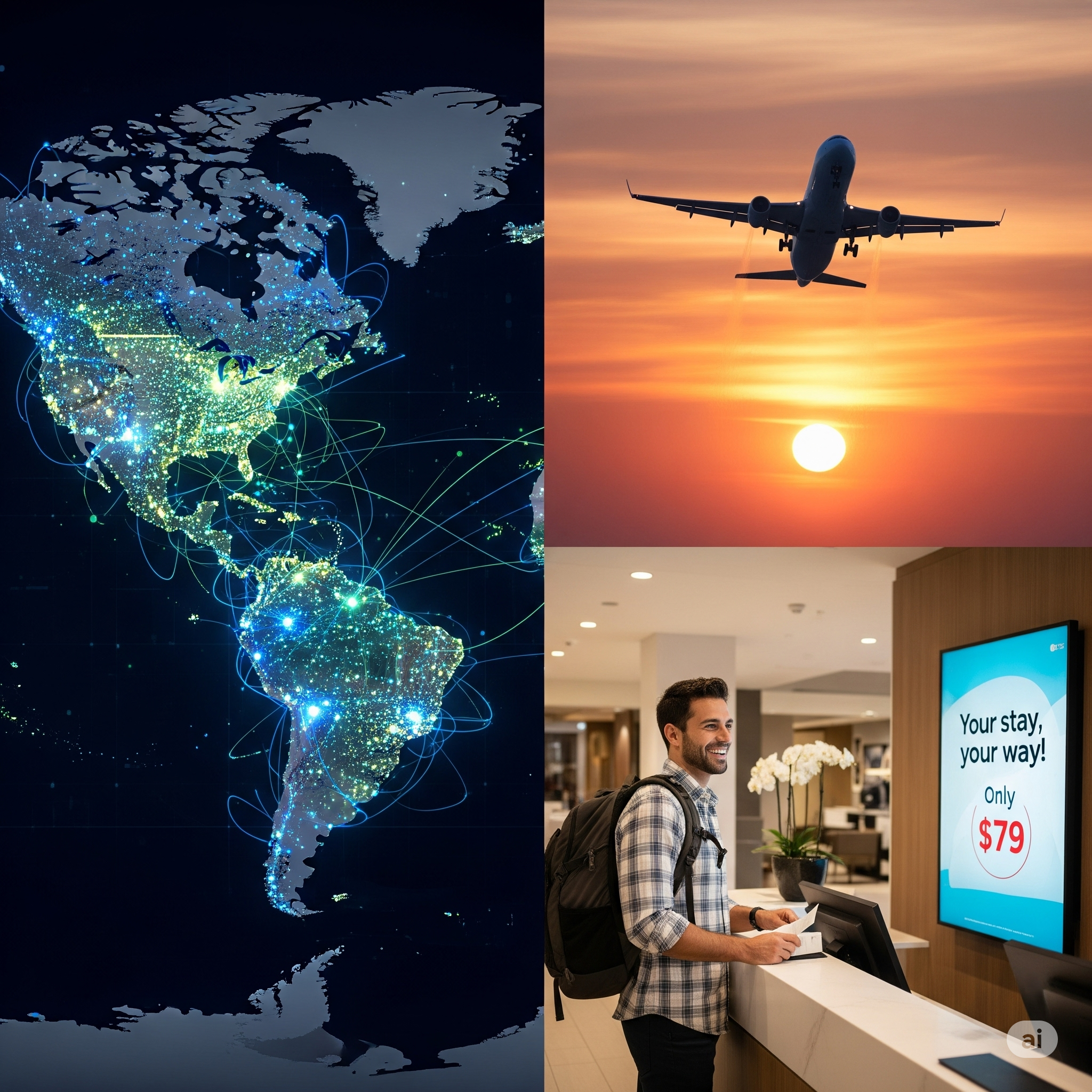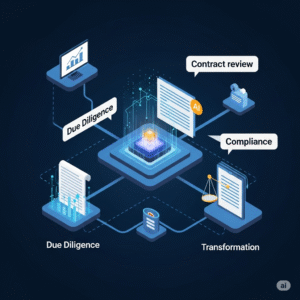Ever notice how the price of a flight or a hotel room seems to fluctuate almost daily, sometimes even hourly? It can feel unpredictable, leaving you wondering if you’re getting the best deal or if you should wait a little longer to book. The secret behind this ever-shifting landscape of travel costs lies in a sophisticated technology called dynamic pricing. And increasingly, the engine driving this dynamic pricing is artificial intelligence. AI dynamic pricing travel is no longer a futuristic concept; it’s the present reality shaping how we book our getaways and business trips across the globe.
The traditional model of setting fixed prices for hotel rooms and airline seats is becoming a relic of the past. In today’s hyper-competitive travel market, businesses need to be agile and responsive to a multitude of factors, from seasonal demand and competitor pricing to real-time events and even individual customer behavior. This is where the power of AI comes into play. Intelligent algorithms can analyze vast amounts of data in real-time, identify patterns, and automatically adjust prices to optimize revenue and occupancy. Understanding AI dynamic pricing travel is crucial for both consumers looking for the best deals and businesses aiming for sustainable profitability.
Decoding AI Dynamic Pricing in Travel
At its core, AI dynamic pricing travel involves using artificial intelligence and machine learning to analyze a multitude of data points and predict the optimal price for a travel product (like a hotel room or a flight seat) at any given moment. Unlike rule-based dynamic pricing systems that rely on pre-set thresholds, AI-powered systems continuously learn and adapt, making pricing decisions with a far greater degree of nuance and accuracy.
The sheer volume and variety of data that AI can process is staggering. For airlines, this includes historical booking data, current seat availability, competitor fares on the same routes, fuel prices, weather forecasts at both origin and destination, and even social media sentiment. In the hotel industry, the factors include occupancy rates of nearby hotels, local events calendars (like festivals in Rishikesh), seasonality, online reviews, and website traffic. By weighing all these variables, AI dynamic pricing travel algorithms can forecast demand and adjust prices accordingly, maximizing revenue per available room (RevPAR) for hotels and yield for airlines.
How AI is Shaping AI Flight Pricing
The airline industry was one of the early adopters of dynamic pricing, and AI is now taking AI flight pricing to new levels of sophistication. Here’s how:
- Predicting Demand with Accuracy: AI algorithms can analyze years of historical data to predict how many seats are likely to be sold on a specific flight at different times of the year. This allows airlines to adjust prices proactively, increasing them during peak travel periods and lowering them during off-peak times to stimulate demand.
- Competitive Analysis in Real-Time: AI constantly monitors the fares offered by competitors on the same routes. If a competitor lowers its prices, the AI can automatically adjust the airline’s fares to remain competitive, ensuring they don’t lose out on bookings.
- Personalized Pricing (Emerging Trend): While still in its early stages, AI is enabling airlines to explore personalized pricing based on a customer’s booking history, loyalty status, and even search behavior. For example, a frequent flyer might be offered a slightly lower fare than a first-time flyer on the same route. However, ethical considerations and transparency are crucial in the implementation of such strategies.
The Impact of AI Dynamic Pricing Travel on Hotels
Hotels are also increasingly leveraging AI dynamic pricing travel to optimize their room rates and maximize revenue. Here’s how AI is transforming hotel pricing strategies, from bustling city hotels to serene retreats in Rishikesh:
- Optimizing Occupancy and Revenue: AI algorithms analyze factors like historical occupancy data, competitor pricing, local events, and even weather forecasts to determine the ideal room rate at any given time. If a large yoga festival is happening in Rishikesh, AI will likely increase room rates due to higher demand. Conversely, during a quiet off-season, prices will be adjusted downwards to attract more bookings.
- Responding to Real-Time Events: AI can quickly react to unexpected events that might impact demand. For example, if there’s a sudden flight cancellation that strands travelers in a city, AI can adjust hotel rates to capitalize on the increased need for accommodation.
- Maximizing Revenue from Every Room: AI dynamic pricing travel isn’t just about filling rooms; it’s about ensuring each room is sold at the optimal price. By continuously adjusting rates based on demand and other factors, hotels can maximize their revenue per available room, a key metric in the hospitality industry.
Real-World Examples: AI Dynamic Pricing Travel in Action
The principles of AI dynamic pricing travel are being implemented by major players across the travel industry. Here are a couple of examples illustrating its practical application:
Case Study 1: Hopper’s Predictive Flight Pricing
Hopper is a popular travel app that uses AI to predict future flight and hotel prices. Their algorithms analyze trillions of data points to advise users on the best time to book. Hopper doesn’t just show current prices; it provides forecasts, telling users whether prices are likely to go up or down in the near future. This predictive capability, powered by sophisticated AI, empowers travelers to make informed booking decisions and often secure better deals. As reported by various tech news outlets, Hopper’s AI has a high degree of accuracy, making it a valuable tool for budget-conscious travelers navigating the complexities of AI flight pricing.
Case Study 2: Beyond Pricing for Vacation Rentals
Beyond Pricing is a company that provides dynamic pricing solutions specifically for vacation rental owners and managers. Their AI algorithms integrate with platforms like Airbnb and Vrbo, analyzing local market data, seasonality, and property-specific factors to automatically adjust rental rates. By using Beyond Pricing, hosts can ensure they are charging competitive rates that maximize their revenue potential without having to manually track market fluctuations. This is a prime example of how AI dynamic pricing travel is benefiting not just large corporations but also individual entrepreneurs in the tourism sector.
Tools Powering AI Dynamic Pricing Travel
While the underlying algorithms can be complex, several user-friendly tools and platforms are available to help travel businesses implement AI dynamic pricing travel strategies.
- PriceLabs: Specializes in dynamic pricing for vacation rentals, using AI to analyze local market data and optimize rates on platforms like Airbnb and Vrbo.
- OTA Insight: Provides hoteliers with real-time market intelligence and dynamic pricing tools powered by AI, helping them optimize their revenue management strategies.
- Custom AI Solutions: For larger airlines and hotel chains, developing custom AI algorithms using platforms like Amazon SageMaker or Google Cloud AI Platform allows for highly tailored and sophisticated pricing strategies.
Getting Started with AI-Powered Pricing Analysis
Even if you’re not ready to implement full-scale AI dynamic pricing travel, you can start leveraging data to inform your pricing decisions. Here’s a beginner-friendly approach:
- Track Competitor Prices Manually (Initially): Regularly monitor the prices of your direct competitors for similar products (hotel rooms, flight routes). Note down their fluctuations and try to identify any patterns.
- Analyze Your Own Booking Data: Look at your historical booking data. When are your peak seasons? What are your average occupancy rates or load factors at different times? Tools like basic spreadsheets can be surprisingly helpful for this initial analysis.
- Utilize Free Market Research Tools: Google Trends (https://trends.google.com/trends/) can give you insights into search interest for your destination or type of travel at different times of the year, which can be a proxy for demand.
- Explore Basic Dynamic Pricing Features: Many booking platforms offer basic dynamic pricing features based on occupancy levels. Explore these options to see how they can help you optimize your rates. As your business grows, you can then consider more sophisticated AI-powered solutions. Remember to consult resources like HubSpot’s guide on using data for business decisions.
The Future of AI Dynamic Pricing Travel
AI dynamic pricing travel is expected to become even more sophisticated and pervasive in the future. We can anticipate:
- Hyper-Personalized Pricing: AI will likely move towards offering truly personalized prices based on individual customer profiles, their willingness to pay, and even their predicted lifetime value. However, this will need to be balanced with transparency and fairness to maintain customer trust.
- Integration with Other AI Tools: Dynamic pricing will become more tightly integrated with other AI-powered tools, such as those used for forecasting demand, managing inventory, and personalizing customer experiences.
- Ethical Considerations: As AI becomes more powerful in setting prices, there will be increasing scrutiny on the ethical implications of dynamic pricing. Ensuring fairness and transparency will be crucial for maintaining consumer confidence in the travel industry.
In conclusion, AI dynamic pricing travel is a powerful force reshaping the economics of the tourism industry. By leveraging the power of artificial intelligence to analyze vast amounts of data and predict optimal pricing strategies, airlines and hotels can maximize their revenue and better manage demand. While it can sometimes feel like a black box to consumers, understanding the fundamental principles of AI flight pricing and hotel rate optimization can empower travelers to make smarter booking decisions. As AI continues to evolve, dynamic pricing will undoubtedly remain a central pillar of the global travel market.
AI Smart Hotels: This Hotel Knows What You Want Before You Do



